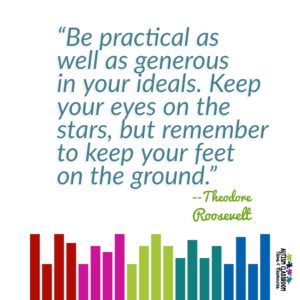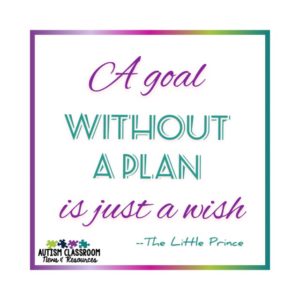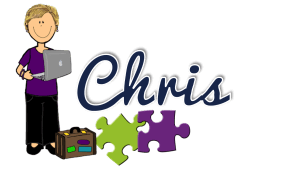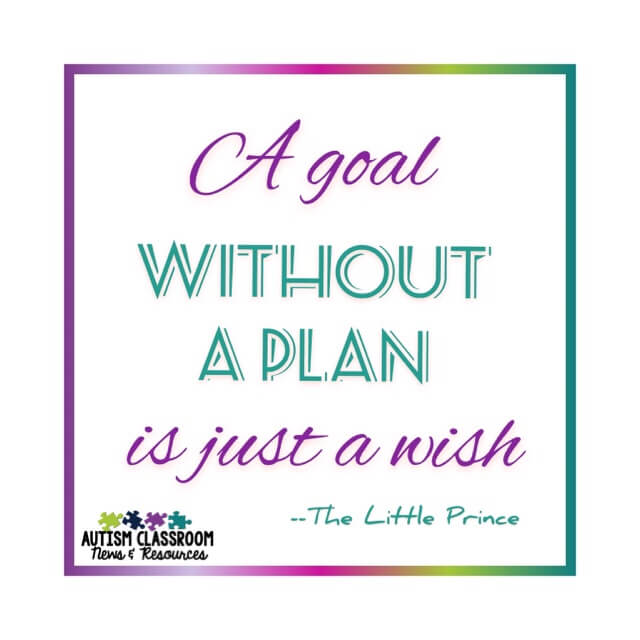 IEPs…probably not what you want to read about over your morning coffee or your evening beverage of choice. However, they are a big part of what we do in special education so I wanted to focus a few posts on them with tips on how to make them easier and run more smoothly.
IEPs…probably not what you want to read about over your morning coffee or your evening beverage of choice. However, they are a big part of what we do in special education so I wanted to focus a few posts on them with tips on how to make them easier and run more smoothly.IEP (and eligibility) meetings are often the first experience that families have with a school district.
Whether their child is entering at preschool or transferring into the school district, the IEP is often one of the first steps to enrolling the child in school if he has a disability. If the child is identified with a disability while in school, the IEP meeting is often the family’s first experience with special education services. This is an opportunity to work with the family in a true collaboration. I talked in a post last April about the importance of keeping the child at the center of the discussion during IEPs, and I continue to believe that is critical for every member of the team (school district and family) to remember. Regardless of whether it’s an initial IEP or a continuing services IEP, this is a chance for every person on the team to talk about what they want for this student.
[socialpug_tweet tweet=”As a school district, the IEP is a chance to find out what the family wants for their child. #iep” display_tweet=”As a school district, the IEP is a chance to find out what the family wants for their child. “]
Don’t think just because the child has been in school for 10 years that you know what the family wants.
Their perspective and dreams for their children change just as our dreams for our own lives change. As the child grows and develops, we have more information and that needs to be factored in to decisions about the direction.
I’ve been involved in a number of situations over the years in which the school presumed what the family wanted for their child and kept trying to write goals and objectives that met what they thought that vision was, only to find out that the parents’ vision had changed. You don’t know this until you ask.
Similarly I’ve been in a situation where families come in assuming what the school district is going to say or propose without listening and discussing what they want. The only way this process works is if we all come to the table prepared to listen and these meetings can set the tone for the school year or the child’s school career.
Consequently, I will devote one of the upcoming posts to how to run an effective meeting for collaboration.
IEPs set the goals we will reach for in the year.
Keep in mind that IEPs ARE NOT THE CHILD’S CURRICULUM. Let me say that again.
[socialpug_tweet tweet=”IEPS ARE NOT THE CURRICULUM. #sped #IEP” display_tweet=”IEPS ARE NOT THE CURRICULUM.”]
This has become less of a problem over the years as the push for children working toward the general education curriculum has become more prominent. However, it has now taken on a somewhat different meaning.
I had a family recently ask a team if we were working on things other than those alternative curriculum goals. They viewed the required alternate curriculum goals as being not representative of what the child needed to learn. And I can’t say I always disagree with that, when our alternate curriculum goals are learning battlefields of the Civil War for a child who is functionally nonverbal and can’t read. However, it is also important that they aren’t considered the only curricula being taught. We still need scientifically based curricula in reading and math, among other areas. Luckily when the family asked this question, the team was able to identify what they were teaching that was not on the IEP. We have to be ready to be do that because parents won’t necessarily see what is being taught beyond the IEP unless we tell them.
So how do we make the curriculum and the IEP come together in a manner that is functional? I’ll try to focus a post on that as well.
How we write the goals and objectives matters in several different ways beyond it just being measurable.
The I in IEP stands for individualization and that is key for a good IEP. This starts with the language we use to write it. I cannot tell you how much I hate seeing “The student will…” in a goal. The child has a name and not using it sends a message that the goal was pulled from a bank and wasn’t individualized to meet his specific needs, even if it was written just for him. At the very least it sends the message that you weren’t thinking of this specific student. This is part of the problem of writing curriculum in as the goal—it’s not his individual need.
How you write the goal (and objectives) has to be related to how you are going to teach the skill.
Writing a goal that a student will master the first 5 steps of a 7-step handwashing routine and then teaching the goal with only 4 steps doesn’t make sense. You have to think about how you are going to teach the skill before or as you write the goal.
You also have to think about how you are going to take data on the goal and objectives before you write them.
In my career, I have spent a great deal of time interpreting and creating data systems for goals I couldn’t understand or couldn’t measure. I can’t tell you how many goals I’ve had to interpret or create data systems that are difficult to manage in the classroom because of how the existing goal was written. For instance, saying that Jim will improve his behavior is neither measurable nor clear. I’m not sure what we need to take the data on. Your criteria have to be meaningful. I talked about choosing meaningful criteria in this post.
https://autismclassroomresources.com/making-decisions-about-criteria-in-ieps/
Being meaningful means that the end result gets you where you want to go. And it is reasonable when compared to similar students their own age. For instance, looking both ways before crossing the street needs to be mastered at 100%….because if you master it at 80%, the last 20% can kill you. However, not all goals need to be mastered at 100%. I don’t know about you, but I don’t stay on task in a group situation 100% of the time and such a goal would be unrealistic.

Goals and objectives have to be set at a challenging level but one that is realistic.
This is a difficult balance to achieve, and sometimes we do and something we don’t. However, we can’t set goals with low expectations just because we know we can reach them. Similarly, we can’t set goals with expectations higher than we can meet or they will fail to be mastered. The only way to truly make these decisions in a meaningful way is to use data on learning past skills.
Sometimes we don’t have this data because the student or the skill is new. In that case, we have to be ready to make changes to the goal once we get some data. Those progress codes we use on the progress reports should be meaningfully based on data. They have to give some indication of whether the goal will be mastered or not. It makes little sense to have a student who is making progress toward meeting the goal throughout the year and then not master it. Somewhere along the way we should have seen that the trajectory of progress was not going to reach mastery in time.
Similarly if we see that it is not going to be mastered, we are obligated to revise the goal. Prior to this point we should have made changes in the way we were teaching the goal based on the data. Our students don’t have 9 weeks (or a year) to lose while not making progress and data needs to help us with that. I will focus more on this in a post specifically about IEPs, but you can find more information about data collection and some tools to use in these posts and here.

Once the IEP is completed, we need to have a way of assuring that it is taught.
I’ve talked about the Teaching Intervention Plans (TIPs) I use to map out how the IEP will be implemented across the classroom. I encourage teachers to take the time to complete it, and often encourage completing the TIPs when writing the draft goals. This helps assure the goals being written are firmly tied to an instructional strategy and data collection method.
I encourage teams to share it with the family so they can see how the IEP will be implemented. That it isn’t just a piece of paper that we complete as a formality. It’s a document that tells teachers where to focus their energy and the student’s time during the day.
I also find it helpful when making placement decisions that MUST be made based on the goals and objectives. It lets the team know the balance of need for small group and large group learning based on the student’s needs to meet the goals/objectives in the IEP. In addition, it outlines that teaching has to take place in increments. We don’t use the IEP goals or objectives (necessarily) as a whole tool and test whether the student can do them everyday. Instead, we break them down into smaller steps and teach them systematically. The TIPs helps us to outline and articulate that plan for the team and assures everyone is on the same page.







